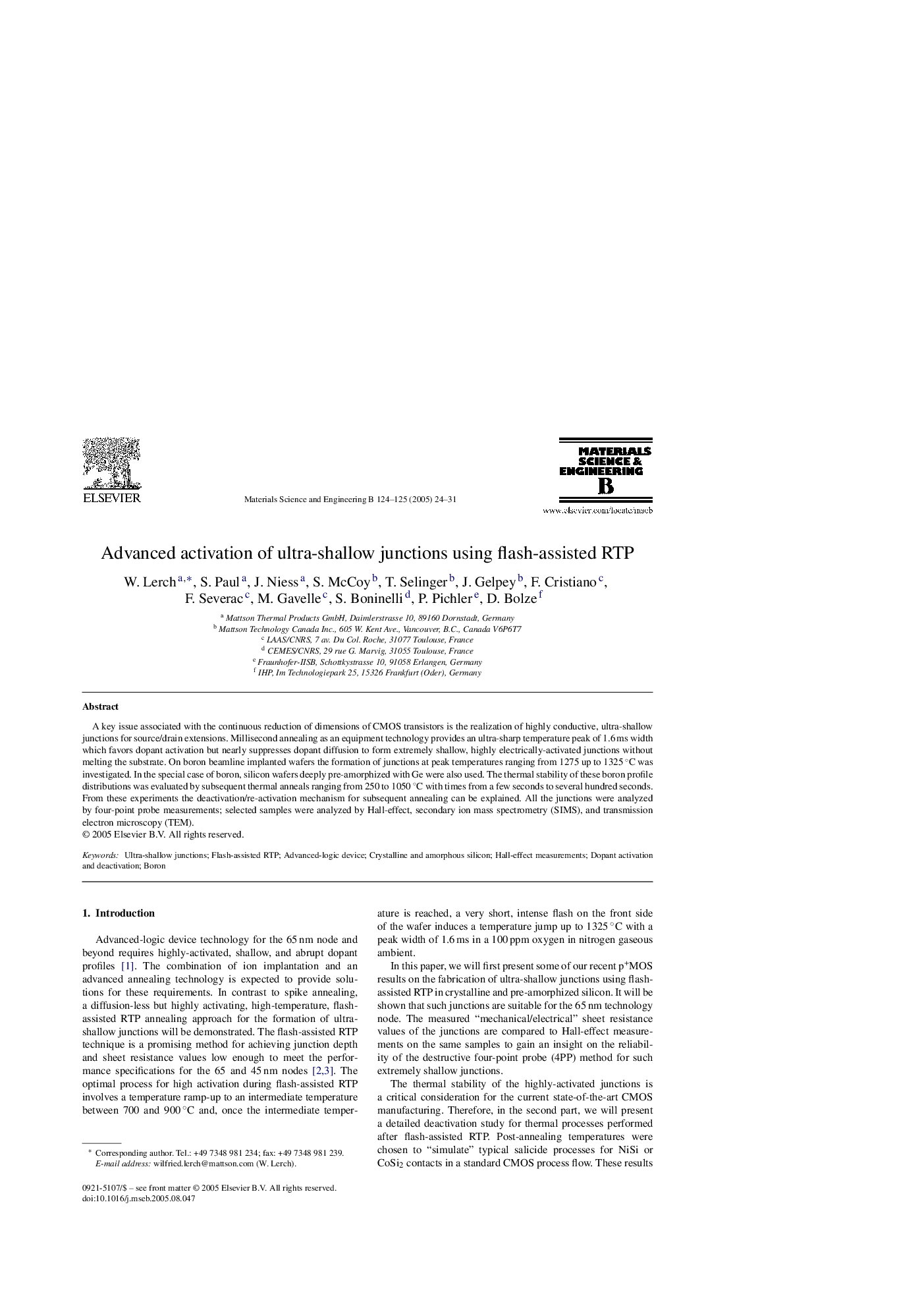| Article ID | Journal | Published Year | Pages | File Type |
|---|---|---|---|---|
| 9783891 | Materials Science and Engineering: B | 2005 | 8 Pages |
Abstract
A key issue associated with the continuous reduction of dimensions of CMOS transistors is the realization of highly conductive, ultra-shallow junctions for source/drain extensions. Millisecond annealing as an equipment technology provides an ultra-sharp temperature peak of 1.6 ms width which favors dopant activation but nearly suppresses dopant diffusion to form extremely shallow, highly electrically-activated junctions without melting the substrate. On boron beamline implanted wafers the formation of junctions at peak temperatures ranging from 1275 up to 1325 °C was investigated. In the special case of boron, silicon wafers deeply pre-amorphized with Ge were also used. The thermal stability of these boron profile distributions was evaluated by subsequent thermal anneals ranging from 250 to 1050 °C with times from a few seconds to several hundred seconds. From these experiments the deactivation/re-activation mechanism for subsequent annealing can be explained. All the junctions were analyzed by four-point probe measurements; selected samples were analyzed by Hall-effect, secondary ion mass spectrometry (SIMS), and transmission electron microscopy (TEM).
Keywords
Related Topics
Physical Sciences and Engineering
Materials Science
Electronic, Optical and Magnetic Materials
Authors
W. Lerch, S. Paul, J. Niess, S. McCoy, T. Selinger, J. Gelpey, F. Cristiano, F. Severac, M. Gavelle, S. Boninelli, P. Pichler, D. Bolze,
